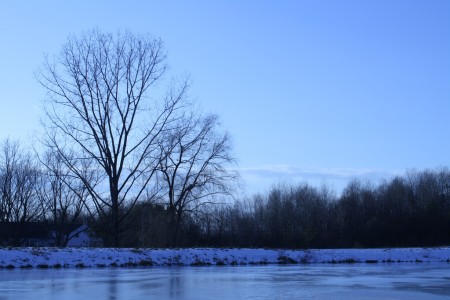When searching for Napoleon’s fleet in the Mediterranean, Admiral Lord Nelson positioned his own ships in a line, spaced as widely as possible while still allowing them to see one another. As it turns out, there is a fairly basic formula for calculating the distance to the horizon from any particular vantage point. This assumes the planet you are on to be perfectly spherical, but it should provide a decent approximation for slightly-squashed spheres such as the Earth. Obviously, the formula will be thrown off if you are on anything other than perfectly level ground. As such, it is better applied at sea than on land.
Where d = the distance to the horizon
h = the observer’s height above the ground
r= the radius of the planetd = √ ( h^2 + 2rh )
Nelson’s flagship, the HMS Victory was 62.5m from waterline to the top of the mainmast. As such, someone sitting up there would have been able to see a bit more than 28km.
This formula is useful if you are on a planet with a known diameter and want to know how far away something on the horizon is (the diameter of the Earth is about 6365km). It could also be useful if you are on a planet with an unknown diameter that you want to know. Just drive a stake into the ground and walk away from it until it begins to vanish – then, apply the formula above to solve for the radius. Of course, you will need either sharp eyes or some kind of telescope if the planet you are on has any substantial size.
Incidentally, while they were still operating, the Concordes flew at 17,000m of altitude, allowing people looking out the windows to get a clear view of the curvature of the Earth.






